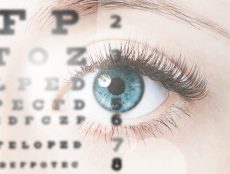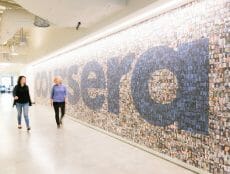
Articles
Editor’s Picks
Industry News
Interviews
K-12
Edsby Is Creating a National Student Records Database for the Country of New Zealand. They Say It’s the First of Its Kind.
By Henry Kronk
June 24, 2019
When it comes to edtech clients, most companies target individual schools or districts. But on June 24, the Ontario-based learning management and student information system provider Edsby landed a bigger fish. The company announced that the country of New Zealand had chosen them to create the Te Rito National Learning Repository and Data Exchange. The new system will serve as a country-wide student electronic records database.
“This is the first national deployment for electronic student records,” said Edsby’s VP of Marketing Dallas Kachan. “It’s the first time a whole country has tried to make electronic student records as accessible as electronic medical records. That’s a big deal.”
Edsby is known to many learners, teachers, and parents as a learning management system (LMS). Many of their platform features, like shared online workspaces, testing and assessment, registration forms, and content sharing absolutely could be found in the LMS box. But Edsby’s competitive edge lies outside of these services.
The Challenges of Collecting Student Records on a National Scale
“When most people think Edsby, they think LMS,” Kachan said. “From day one, we did things a little differently. We architected Edsby to interface with existing systems used in a district or a region. Unlike freemium LMSs where teachers can set things up themselves, we decided to do the opposite. We actually need to have these close connections with existing systems to do what we do in Edsby. That technology is behind the news today.”
The platform was designed to be able to integrate with just about any student database under the sun. For New Zealand, that capacity wasn’t simply attractive—it was necessary.
The country’s education system is comprised of over 2,500 institutions, most of which are public schools (less than 5% are private). The country does not, however, use a district system. Each of the schools operate independently. When it comes to a decision like deploying an edtech product or service, the school makes it on its own. That holds true for data repositories containing student records. These are known as student information systems (SIS) in North America, or student management systems (SMS) in New Zealand and elsewhere.
“So in New Zealand, there’s 2500 different schools with 2500 different SMSs,” Kachan said. “That creates a massive problem for when a student transfers from one school to another. Nothing comes along with them in terms of records. So New Zealand has found that the only way to solve this problem is to get the data out of the SMSs in a standardized way that is shareable with other schools.”
As Craig Mullins, CEO of Mullins Consulting, ironically wrote for Database Trends and Applications, “The best thing about database standards is that there are so many to choose from.” Widely followed protocols—like SCORM and xAPI for LMSs—do not exist to the same degree in the SIS/SMS world.
Integrating with Everything from Contemporary SISs/SMSs to Mainframes
“Nobody else can do what we do,” Kachan said. “Talking to any SMS using any available technology, whether its open standards, whether it’s a proprietary sync, or even a CSV (comma-separated values) exports, we can do anything necessary to talk to a legacy system. SISs span a huge spectrum from contemporary products built relatively recently to 30- or 40-year-old mainframe-based databases that don’t have any sorts of modern interfaces. The Hillsborough County District’s database in Florida [an Edsby client] is still run on a mainframe. The guys that wrote that software have long since retired.”
That communication, furthermore, between Edsby and whatever SIS/SMS they’re dealing with has to go two ways. For many of their other features to work—like recording attendance, using the Edsby Gradebook, or more—the platform has to be able to pull records from the SMS in question and push new information back into it.
“The customer asks you to connect to their data and recognizes that the keys to the kingdom—the student data—will be held by Edsby in the cloud,” Kachan said. “Then the fun begins. There’s a lot of pushing and pulling goin on.”
The Question of Data Privacy
New Zealand had another big concern with their national student database: privacy. Edsby partners with Microsoft Azure, in part, because they can make certain privacy guarantees.
“In the U.S., there’s never really a question about where data resides,” Kachan said. “When it comes to cloud-based SISs, districts just assume their data is staying in the U.S. because the internet is an American phenomenon, right? Outside the U.S., that is not the case. Every other country is concerned about where that data physically resides.
“We have a close relationship with Microsoft and their Azure cloud. They’re the only company that can guarantee that a company’s data is going to stay in their region. Other cloud vendors don’t do that. They spray it around the globe for redundancy and failover and backup and edge-caching, as they say (keeping the data nice and close to where it might be needed). Whereas Microsoft has architected their data centers to guarantee that data stays in one specific area of the world. That was critical to New Zealand. And we were able to satisfy that.”
As Kachan puts it, New Zealand isn’t just a huge client with which his company has contracted. The idea of a national electronic student records database is also an important step forward for the field of education.
“We think that electronic student records are becoming just as important to states, provinces, and countries as electronic medical records,” he said. “Having your whole patient file on record revolutionized medicine. We think there will be a similar revolution in education.”
Correction June 25th: A previous version of this article stated competitor LMS models as ‘premium.’ It was supposed to be stated as freemium and has been changed accordingly.
Featured Image: Dan Freeman, Unsplash.









[…] April 15, the online learning platform Coursera debuted a new machine learning tool called CourseMatch. It automatically pairs university […]
[…] April 15, the online learning platform Coursera debuted a new machine learning tool called CourseMatch. It automatically pairs university […]
[…] Coursera Launches “AI for Everyone” (2018) […]